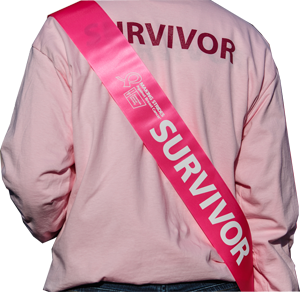
Cancer Survivor Rehab
Cancer Survivorship Program: Physical Therapy for Cancer Patients
At The Jackson Clinics, we understand the unique challenges faced by cancer patients and the importance of holistic care in their recovery.
Our cancer rehabilitation physical therapy program is carefully designed to meet the specific needs of patients undergoing cancer treatment.
Cancer survivorship starts at the time of cancer diagnosis and physical therapy can help in a number of ways in all stages along the way.

What is Cancer Rehabilitation Physical Therapy?
Cancer rehabilitation physical therapy is a specialized branch of physical therapy aimed at enhancing the quality of life for individuals diagnosed with cancer.
It focuses on managing the physical side effects of cancer and its treatments, helping patients regain functional abilities that may have been compromised.
Goals of Cancer Rehabilitation Physical Therapy:
- Manage Pain: Alleviate pain and discomfort caused by cancer and its treatments.
- Regain Strength and Mobility: Improve muscle strength, flexibility, and range of motion.
- Enhance Overall Well-being: Address physical impairments, manage symptoms, and improve emotional and mental health.
The Importance of Exercise For Cancer Survivors
Cancer survivors need to know it is safe and important to be as active as safely possible for them during each stage of survivorship.
Physical activity recommendations for cancer survivors, in general, are the same as recommendations for healthy adults. For those unable to meet these recommendations, it is important to be as active as possible.
Any activity is better than none and a physical therapist can help tailor a physical activity program to meet individual needs.
Physical activity recommendations:
- 150 minutes per week of moderate intensity cardiovascular exercise
- 2 days per week of total body resistance training
Cancer treatments can lead to secondary cancers, but staying active helps reduce this risk.
Exercise has also been shown to improve quality of life and some health indicators after diagnoses.
The Impact Of Reduced Physical Activity
– Cardiovascular (CV) implications:
Without intervention, individuals undergoing active cancer treatment lose CV fitness. With only a moderate level of physical activity, fitness can be maintained or gained during cancer treatment.
This has very important implications for maintaining current functional status and is especially important for elderly to maintain their independence.
After cancer treatments are completed, survivors still tend to lose CV fitness if no intervention is made, and significant fitness can be made with an appropriate physical activity routine.
– Cancer-related fatigue:
This is a common but not fully understood side effect of cancer and treatments. Fatigue leads to decreased activity which leads to deconditioning and more fatigue. This creates a vicious cycle and intervention can help prevent or minimize the deconditioning.
– Muscular strength implications:
During and after cancer treatments, survivors tend to lose muscular strength. Resistance training is safe and effective but with certain at risk populations, specific guidance is important to decrease the risk of complications such as lymphedema.
– Pain:
Pain is a common complaint among cancer survivors, and many of these musculoskeletal sources of pain. A thorough evaluation can help determine the sources of pain and identify those that will benefit from physical therapy intervention
Furthermore, maintaining a healthy weight is very important, as obesity increases cancer risk and mortality.
American Cancer Society (ACS) and World Health Organization (WHO) recommend maintaining BMI within 18.9-24.9 range and avoiding increases in waist circumference.
What Do Physical Therapists Do For Cancer Patients?
Physical therapists play a crucial role in the overall well-being of cancer patients.
Here are some key benefits of cancer rehabilitation physical therapy:
- Pain Management: Cancer and its treatments can cause significant pain and discomfort. Physical therapists use various techniques, such as heat therapy, massage, and gentle exercises, to help alleviate pain and improve comfort levels.
- Improvement of Mobility and Function: Cancer treatments can lead to muscle weakness, fatigue, and limited range of motion. Physical therapists design personalized exercise programs to target these areas, helping patients regain strength, flexibility, and mobility. This focus on physical function enhances independence and daily activities.
Physical Therapy Options for Cancer Patients
At The Jackson Clinics, we offer specialized physical therapy options to improve the quality of life and promote overall well-being for cancer patients.
- Individualized Treatment Plans: Each patient’s needs and goals are unique. Our experienced physical therapists work closely with cancer patients to create personalized plans that address their specific concerns, maximizing the effectiveness of therapy.
- Exercise and Rehabilitation Techniques: Through targeted exercises, we aim to improve strength, flexibility, and endurance. Our therapists guide patients through safe and effective exercises, ensuring proper form and technique to minimize the risk of injury.
- Managing Treatment Side Effects: Cancer treatments can result in various side effects, such as pain, fatigue, and decreased mobility. Our therapists are trained to address these challenges and provide specialized interventions to alleviate discomfort and improve overall functioning.
By offering comprehensive physical therapy options, we strive to empower cancer patients to actively participate in their recovery process and enhance their overall quality of life.
If you or a loved one are undergoing cancer treatment, consider incorporating physical therapy into your care plan.
















